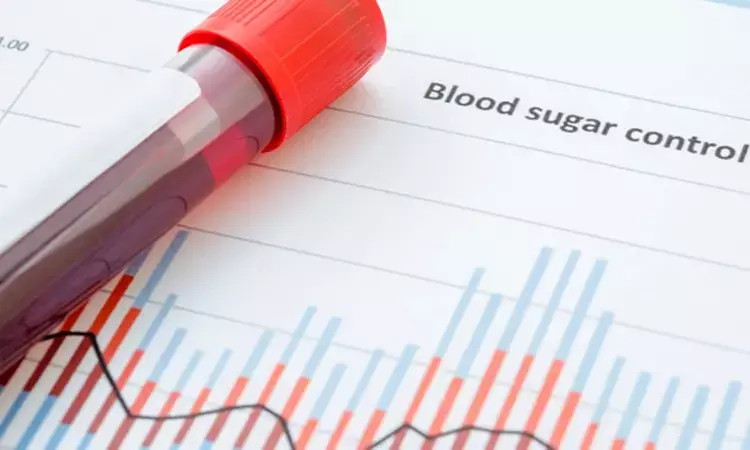- Home
- Medical news & Guidelines
- Anesthesiology
- Cardiology and CTVS
- Critical Care
- Dentistry
- Dermatology
- Diabetes and Endocrinology
- ENT
- Gastroenterology
- Medicine
- Nephrology
- Neurology
- Obstretics-Gynaecology
- Oncology
- Ophthalmology
- Orthopaedics
- Pediatrics-Neonatology
- Psychiatry
- Pulmonology
- Radiology
- Surgery
- Urology
- Laboratory Medicine
- Diet
- Nursing
- Paramedical
- Physiotherapy
- Health news
- Fact Check
- Bone Health Fact Check
- Brain Health Fact Check
- Cancer Related Fact Check
- Child Care Fact Check
- Dental and oral health fact check
- Diabetes and metabolic health fact check
- Diet and Nutrition Fact Check
- Eye and ENT Care Fact Check
- Fitness fact check
- Gut health fact check
- Heart health fact check
- Kidney health fact check
- Medical education fact check
- Men's health fact check
- Respiratory fact check
- Skin and hair care fact check
- Vaccine and Immunization fact check
- Women's health fact check
- AYUSH
- State News
- Andaman and Nicobar Islands
- Andhra Pradesh
- Arunachal Pradesh
- Assam
- Bihar
- Chandigarh
- Chattisgarh
- Dadra and Nagar Haveli
- Daman and Diu
- Delhi
- Goa
- Gujarat
- Haryana
- Himachal Pradesh
- Jammu & Kashmir
- Jharkhand
- Karnataka
- Kerala
- Ladakh
- Lakshadweep
- Madhya Pradesh
- Maharashtra
- Manipur
- Meghalaya
- Mizoram
- Nagaland
- Odisha
- Puducherry
- Punjab
- Rajasthan
- Sikkim
- Tamil Nadu
- Telangana
- Tripura
- Uttar Pradesh
- Uttrakhand
- West Bengal
- Medical Education
- Industry
Poor clinical outcomes observed in MASLD patients with 1-hr plasma glucose over 8.6mmol/L, reveals study

A new study published in the journal of Diabetes Research and Clinical Practice showed that metabolic dysfunction may be defined by a 1-hour plasma glucose (PG) level of ≥8.6 mmol/L in metabolic dysfunction-associated steatotic liver disease (MASLD).
Over one-third of the general population suffers from metabolic dysfunction-associated steatotic liver disease, formerly known as nonalcoholic fatty liver disease (NAFLD), which has grown to be a major global public health problem. A poor profile of metabolic and inflammatory abnormalities, including obesity, type 2 diabetes mellitus (T2DM), hyperlipidemia, hypertension, and cardiovascular disease (CVD), is evident in MASLD.
The International Diabetes Federation Position Statement has suggested a 1-hour PG value of ≥ 8.6 mmol/L as an extra diagnostic criteria for diabetes. This value is a more sensitive indicator of long-term cardiovascular problems associated with diabetes mellitus than standard glucose indicators. Its worth in MASLD is yet unknown, though. Thus, Long Teng and colleagues carried out a cross-sectional study in a Chinese population to determine the potential value of using 1-h PG ≥ 8.6 mmol/L as a diagnostic marker in MASLD and to look into the relationship between clinical outcomes and 1-h PG levels in patients with suspected fatty liver.
The retrospective enrollment was conducted from June 2009 to May 2024 for consecutive participants with imaging evaluations of fatty liver and a 75-g oral glucose tolerance test. Of these, 1154 participants had MASLD, 161 met the diagnostic criteria for nonalcoholic fatty liver disease but not MASLD (NAFLD-non-MASLD), and 1026 subjects had non-fatty liver.
When compared to patients with non-fatty liver, individuals with MASLD or NAFLD-non-MASLD expressed higher 1-h PG levels. The probability of moderate-to-severe steatosis, ALT elevation, advanced fibrosis (p = 0.03), and cardiovascular illnesses was linked to 1-h PG ≥ 8.6 mmol/L in individuals with MASLD or NAFLD-non-MASLD. Also, the frequency of advanced fibrosis was greater in NAFLD-non-MASLD patients with 1-h PG ≥ 8.6 mmol/L than in MASLD patients with or without 1-h PG ≥ 8.6 mmol/L (p < 0.05).
In the patients with NAFLD-non-MASLD, 1-h PG≯≥ 8.6 mmol/L was found to be a risk factor for clinical outcomes such liver fibrosis and CVD. Because 1-h PG levels are predictive of clinical outcomes in individuals with MASLD, the findings suggest that they should be regarded as an independent diagnostic indicator.
Soure:
Teng, L., Luo, L., Sun, Y., Wang, W., Dong, Z., Cao, X., Ye, J., & Zhong, B. (2024). Applying 1-hour postload plasma glucose diagnostic criteria reveals high Progressive Risks of potential MASLD. In Diabetes Research and Clinical Practice (p. 111973). Elsevier BV. https://doi.org/10.1016/j.diabres.2024.111973
Neuroscience Masters graduate
Jacinthlyn Sylvia, a Neuroscience Master's graduate from Chennai has worked extensively in deciphering the neurobiology of cognition and motor control in aging. She also has spread-out exposure to Neurosurgery from her Bachelor’s. She is currently involved in active Neuro-Oncology research. She is an upcoming neuroscientist with a fiery passion for writing. Her news cover at Medical Dialogues feature recent discoveries and updates from the healthcare and biomedical research fields. She can be reached at editorial@medicaldialogues.in
Dr Kamal Kant Kohli-MBBS, DTCD- a chest specialist with more than 30 years of practice and a flair for writing clinical articles, Dr Kamal Kant Kohli joined Medical Dialogues as a Chief Editor of Medical News. Besides writing articles, as an editor, he proofreads and verifies all the medical content published on Medical Dialogues including those coming from journals, studies,medical conferences,guidelines etc. Email: drkohli@medicaldialogues.in. Contact no. 011-43720751


